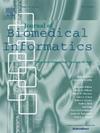多源药物联合和全方位特征融合预测药物-药物相互作用事件。
IF 4
2区 医学
Q2 COMPUTER SCIENCE, INTERDISCIPLINARY APPLICATIONS
引用次数: 0
摘要
背景:在多种用药日益普遍的医学背景下,准确预测药物相互作用(ddi)是提高临床用药安全性和个性化治疗的必要条件。尽管在识别潜在ddi方面取得了进展,但对ddi潜在机制的深入了解仍然有限,制约了新药的快速开发和临床应用。方法:引入基于多源药物数据和综合特征融合技术的新型多模态药物-药物相互作用(MMDDI)模型,提高DDI预测的准确性和深度。我们利用了真实世界的DrugBank数据集,其中包含丰富的药物信息。我们的任务是预测药物对之间的多重相互作用事件,并分析这些相互作用的潜在机制。MMDDI模型通过特征提取、药物配对策略、融合网络和多源特征集成四个关键阶段实现精确预测。我们采用先进的数据融合技术和机器学习算法对药物特征和相互作用事件进行多维分析。结果:MMDDI模型对三个代表性预测任务进行了综合评价。实验结果表明,MMDDI模型在预测精度、泛化能力和可解释性方面优于现有技术。其中,MMDDI模型在测试集上的准确率达到93%,AUC-ROC曲线下面积达到0.9505,具有优异的预测性能。此外,该模型的可解释性分析揭示了药物特征与相互作用机制之间的复杂关系,为临床用药决策提供了新的见解。结论:MMDDI模型不仅提高了DDI预测的准确性,而且通过深入分析药物相互作用机制,为临床用药安全和药物开发提供了重要的科学支持。这些发现有可能改善患者的用药效果,并有助于个性化医疗的发展。本文章由计算机程序翻译,如有差异,请以英文原文为准。

A Multi-Source drug combination and Omnidirectional feature fusion approach for predicting Drug-Drug interaction events
Background
In the medical context where polypharmacy is increasingly common, accurately predicting drug-drug interactions (DDIs) is necessary for enhancing clinical medication safety and personalized treatment. Despite progress in identifying potential DDIs, a deep understanding of the underlying mechanisms of DDIs remains limited, constraining the rapid development and clinical application of new drugs.
Methods
This study introduces a novel multimodal drug-drug interaction (MMDDI) model based on multi-source drug data and comprehensive feature fusion techniques, aiming to improve the accuracy and depth of DDI prediction. We utilized the real-world DrugBank dataset, which contains rich drug information. Our task was to predict multiple interaction events between drug pairs and analyze the underlying mechanisms of these interactions. The MMDDI model achieves precise predictions through four key stages: feature extraction, drug pairing strategy, fusion network, and multi-source feature integration. We employed advanced data fusion techniques and machine learning algorithms for multidimensional analysis of drug features and interaction events.
Results
The MMDDI model was comprehensively evaluated on three representative prediction tasks. Experimental results demonstrated that the MMDDI model outperforms existing technologies in terms of predictive accuracy, generalization ability, and interpretability. Specifically, the MMDDI model achieved an accuracy of 93% on the test set, and the area under the AUC-ROC curve reached 0.9505, showing excellent predictive performance. Furthermore, the model’s interpretability analysis revealed the complex relationships between drug features and interaction mechanisms, providing new insights for clinical medication decisions.
Conclusion
The MMDDI model not only improves the accuracy of DDI prediction but also provides significant scientific support for clinical medication safety and drug development by deeply analyzing the mechanisms of drug interactions. These findings have the potential to improve patient medication outcomes and contribute to the development of personalized medicine.
求助全文
通过发布文献求助,成功后即可免费获取论文全文。
去求助
来源期刊

Journal of Biomedical Informatics
医学-计算机:跨学科应用
CiteScore
8.90
自引率
6.70%
发文量
243
审稿时长
32 days
期刊介绍:
The Journal of Biomedical Informatics reflects a commitment to high-quality original research papers, reviews, and commentaries in the area of biomedical informatics methodology. Although we publish articles motivated by applications in the biomedical sciences (for example, clinical medicine, health care, population health, and translational bioinformatics), the journal emphasizes reports of new methodologies and techniques that have general applicability and that form the basis for the evolving science of biomedical informatics. Articles on medical devices; evaluations of implemented systems (including clinical trials of information technologies); or papers that provide insight into a biological process, a specific disease, or treatment options would generally be more suitable for publication in other venues. Papers on applications of signal processing and image analysis are often more suitable for biomedical engineering journals or other informatics journals, although we do publish papers that emphasize the information management and knowledge representation/modeling issues that arise in the storage and use of biological signals and images. System descriptions are welcome if they illustrate and substantiate the underlying methodology that is the principal focus of the report and an effort is made to address the generalizability and/or range of application of that methodology. Note also that, given the international nature of JBI, papers that deal with specific languages other than English, or with country-specific health systems or approaches, are acceptable for JBI only if they offer generalizable lessons that are relevant to the broad JBI readership, regardless of their country, language, culture, or health system.
 求助内容:
求助内容: 应助结果提醒方式:
应助结果提醒方式:


